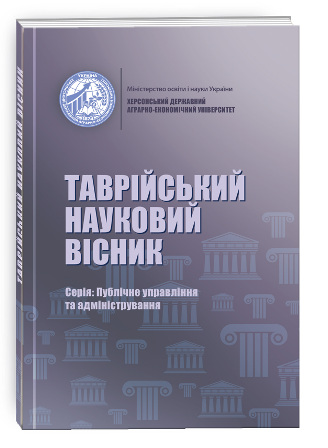HOLODOMOR 1932-1933 AS A FACTOR OF THE LIQUIDATION OF THE SOCIO-POLITICAL COMPONENT OF CIVIL SOCIETY: A HISTORICAL AND LEGAL STUDY
DOI:
https://doi.org/10.32782/tnv-pub.2023.6.11Keywords:
Holodomor, Holodomor-genocide, civil society, civil society institutions, genocide, peasants, food, collective and state farmers, historical and legal research, destruction, legal acts, historiographyAbstract
The article is devoted to the issue of historical and legal research of the Holodomor of 1932–1932 as a factor of elimination of the socio-political component of civil society, which is relevant in modern Ukrainian society, and which has flared up with renewed vigour and raised these problems to a new level now during the full-scale invasion of our territory by the Russian Federation. The historiography and archaeography of the Holodomor is extensive and has been the subject of special studies on numerous occasions. However, this problem is hardly exhaustive for many reasons. Among them are new searches for documents, new methodological approaches, and new issues. In this sense, the study of historical and legal subjects is not without meaning, given the productivity of interdisciplinary, including historical and legal approaches and the practical absence of studies of civil society in the history of Ukraine, in particular during the period of the new economic policy. The author sought to develop and use an original methodology for studying the destruction of civil society institutions during the Holodomor, taking into account the uniqueness of this phenomenon. Let us emphasize that the relatively wide use of interdisciplinary methods by researchers in the study of the Holodomor is objectively determined by a number of factors. First of all, it is about the logic and regularity of the development of social knowledge, which is characterised by a tendency to generalise and synthesise the achievements of various social sciences and certain historical and legal disciplines. Secondly, the Holodomor-genocide was complex and systemic. According to the plan of the bolshevik’s leadership, they were supposed to radically change all the main spheres of life of the Ukrainian peasantry and ultimately turn it into a cog of the communist utopia. This article is an attempt to conduct a research in accordance with the principles of science on the basis of interdisciplinarity, which should improve the existing scientific understanding of the preconditions, implementation and consequences of the Holodomor, as well as to carry out a legal analysis of the process and individual facts of the repressive destruction of civil society institutions.
References
Рафаель Лемкін. Радянський геноцид в Україні (стаття 28 мовами). / Редактор Роман Сербин, упорядник Олеся Стасюк. К.: Майстерня книги, 2009. 208 с.
Василенко В. Голодомор 1932–1933 років в Україні як злочин геноциду: правова оцінка. К.: Видавництво імені Олени Теліги, 2009. 48 с.
Ромовська З.В. Сімейне законодавство України: Гендерна експертиза / Відп. Ред. Т.М. Мельник. К.: Логос, 2001. 40 с.
Пирожков С.І., Перковський А.Л. Екстремальні ситуації і демографічні катастрофи в Україні (1920–1930 рр.). Вибрані наукові праці. 2010. Т. І. С. 718–728.
Навчальний посібник для вчителів «Голодомор 1932–1933 років – геноцид української нації». Київ, 2021. 336 с.: іл.
Станіслав Кульчицький. Український Голодомор в контексті політики Кремля початку 1930-х рр. К., НАН України, Інститут історії України, 2014. 208 с.
Політичний терор і тероризм в Україні ХІХ–ХХ ст. Історичні нариси. Під ред. В. Смолія. К., 2002. 952 с.
Mace James E. The Famine of 1933: a Survey of the Sources / The Famine in Ukraine 1932–1933. Edited by Roman Serbyn and Bogdan Krawchenko. Edmonton, CIUS, 1986. P. 12.
Nove Alec. An Economic History of the U.S.S.R. Penguin Books, 1989. P. 170.







